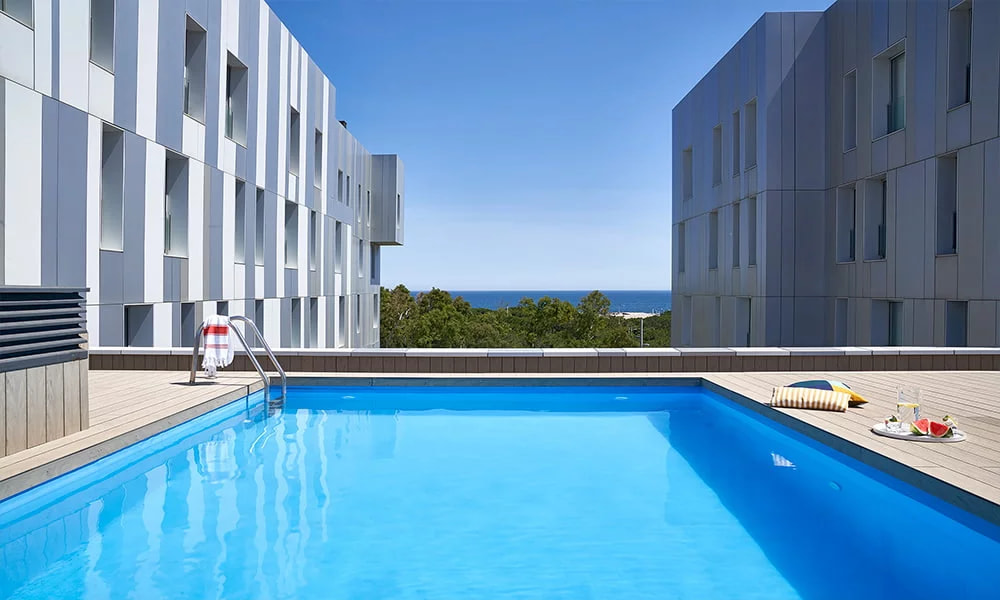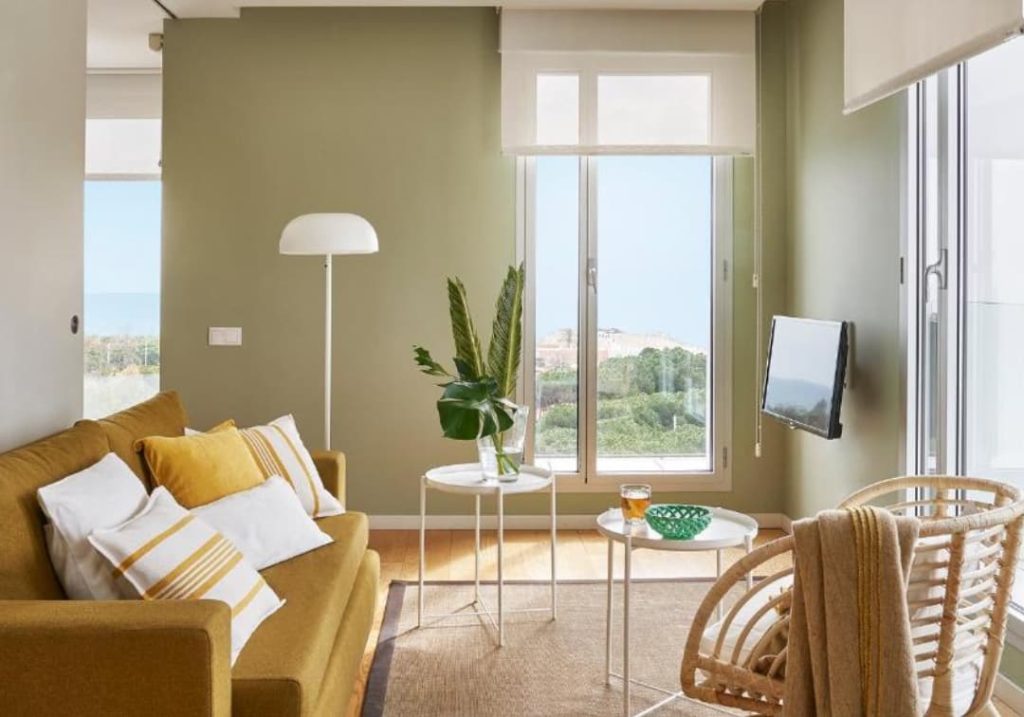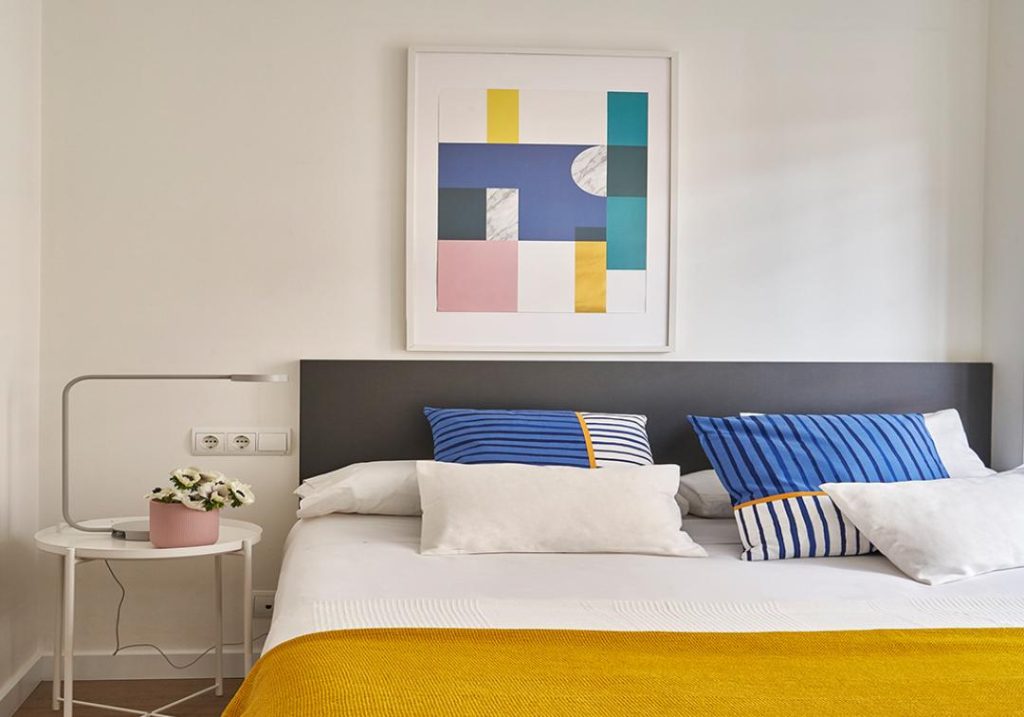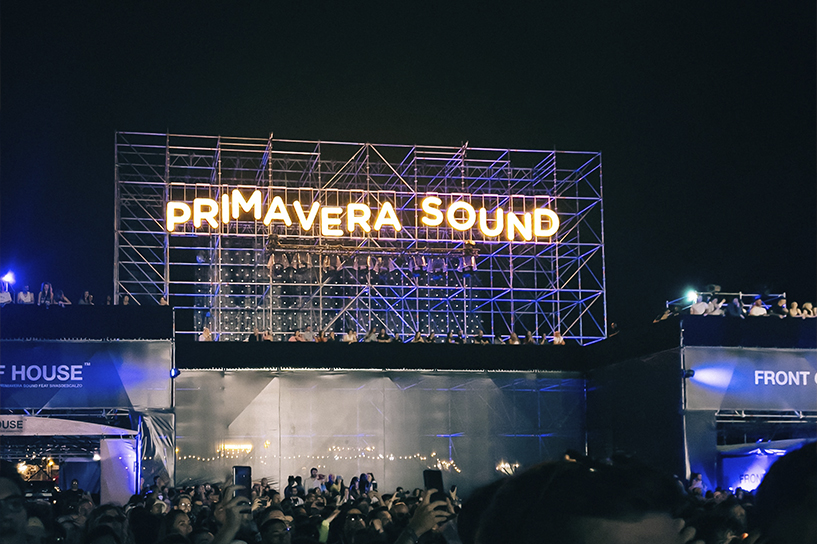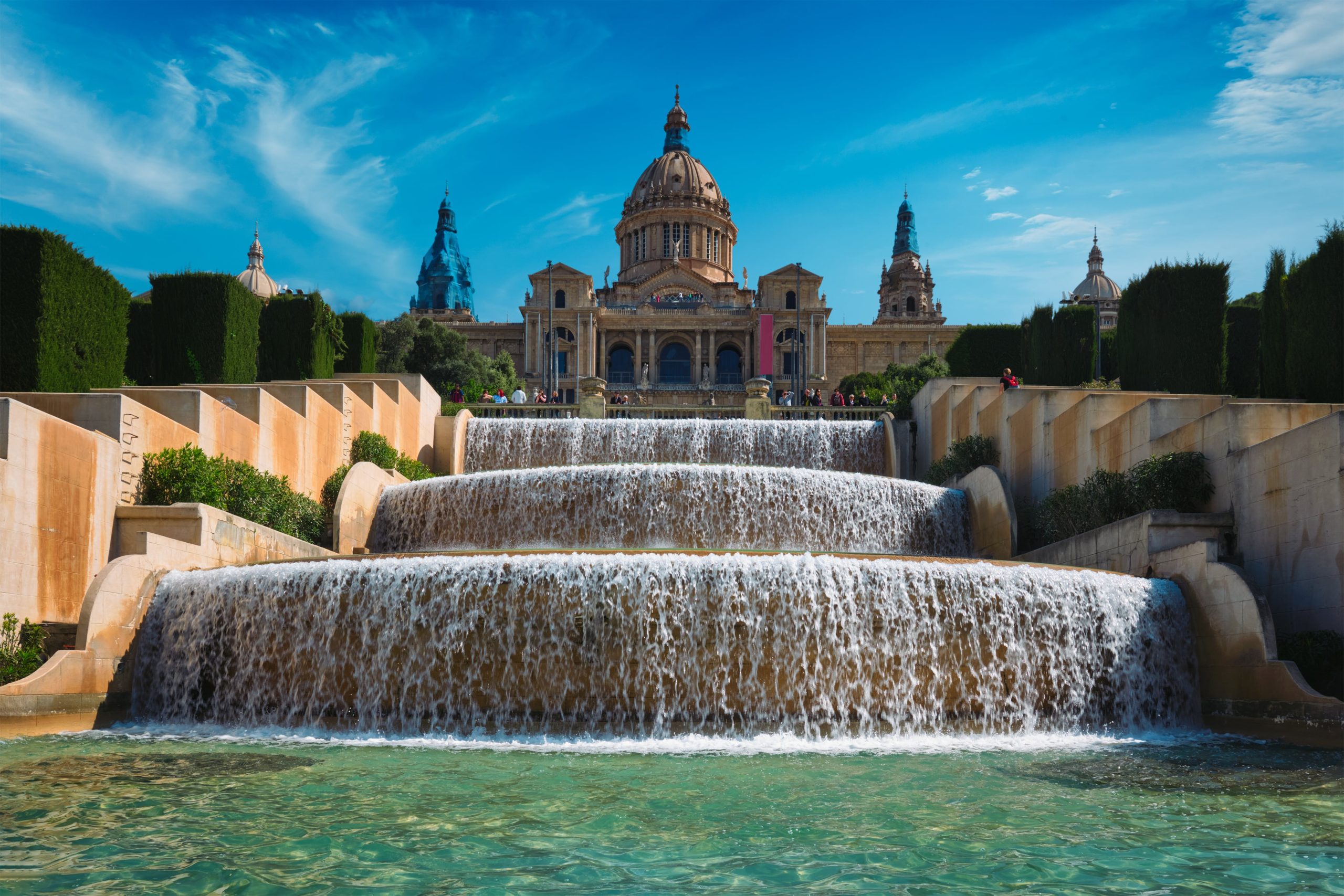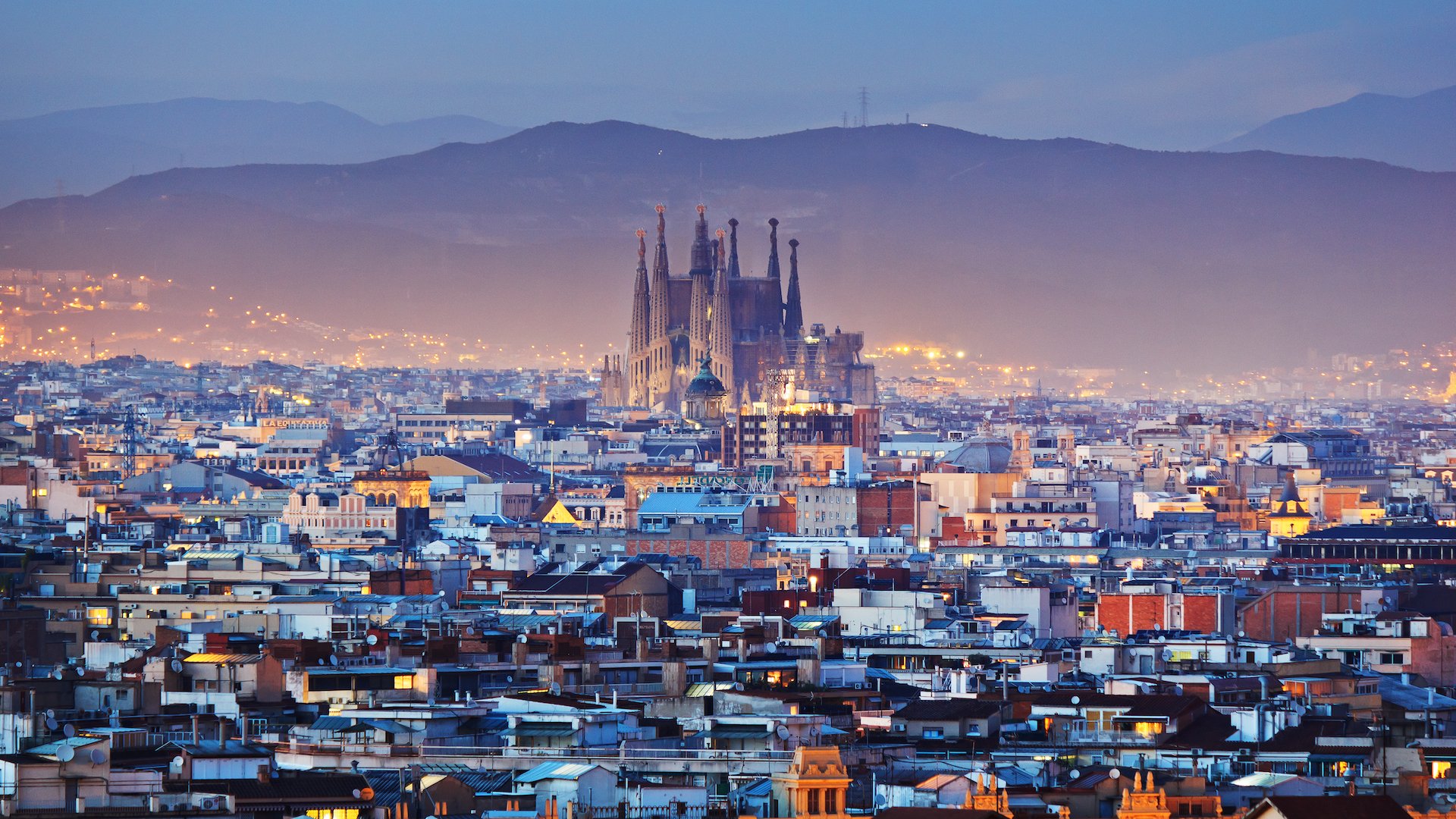La Pedrera is one of the most visited monuments in Barcelona by tourists and locals alike. This Gaudí masterpiece contains all the elements that will leave you in awe: an imposing building with sinuous shapes, a rooftop with stunning views, and a unique Modernist style in the heart of Barcelona.
If you’re planning to visit La Pedrera, Lugaris has prepared this fascinating article filled with fun facts that you likely didn’t know. Let’s get started! 😉
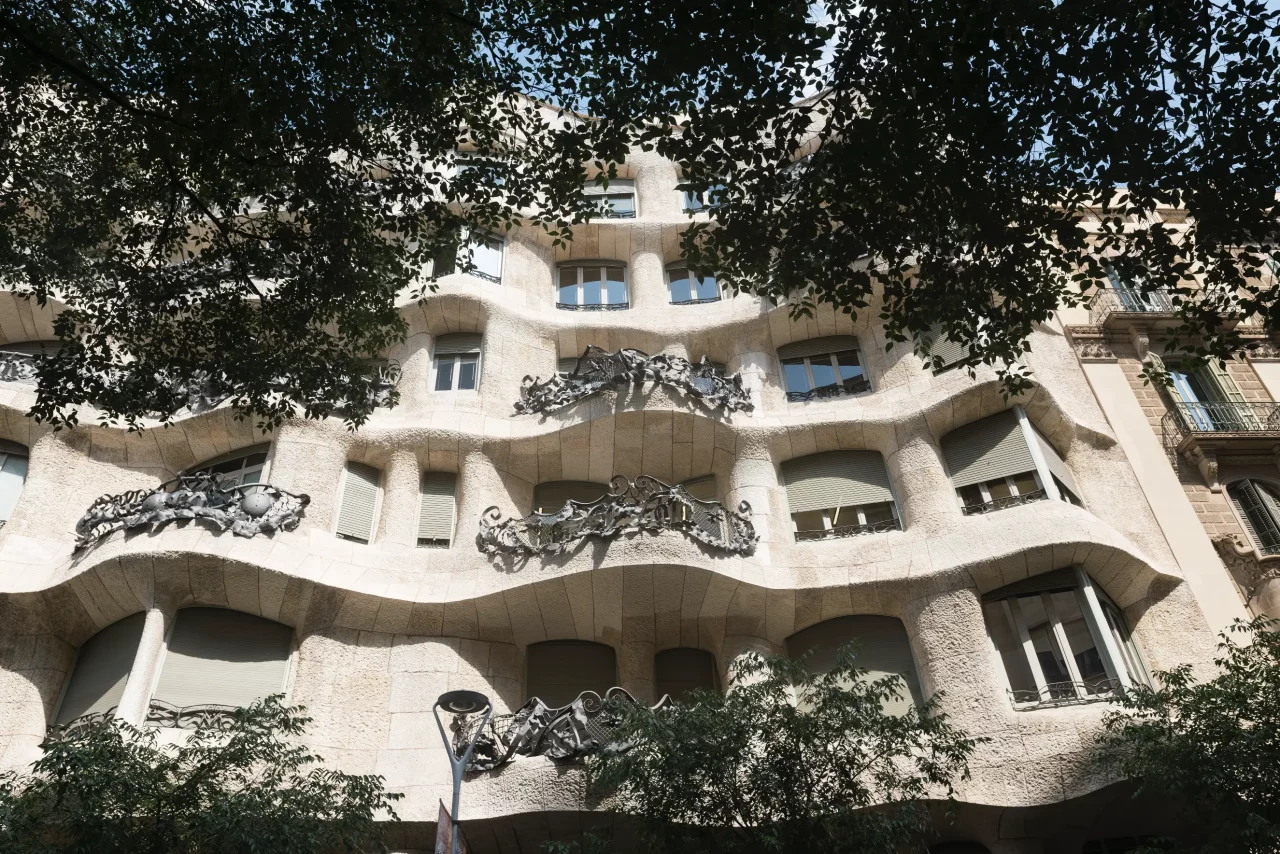
Why is it called La Pedrera?
La Pedrera gets its name from its rock-like appearance that resembles a quarry, or “pedrera” in Catalan. This name was given to the building by the people of Barcelona due to the uniqueness of its facade, which looks like it was sculpted from natural stone. However, its official name is Casa Milà, a symbol of Catalan Modernism and one of Antoni Gaudí’s most emblematic works.
La Pedrera, or Casa Milà, is an architectural gem that is part of Barcelona’s cultural heritage and the artistic legacy of Antoni Gaudí, the genius behind many of the city’s most iconic works, such as the Sagrada Familia or Casa Batlló. Constructed between 1906 and 1912, this Catalan Modernism masterpiece was commissioned by the married couple Pere Milà and Roser Segimon as a family residence and also as a space to house apartments and commercial premises.
What distinguishes La Pedrera is its undulating facade, which appears sculpted by nature, with organic shapes that break away from the conventional aesthetics of the era. Gaudí used local limestone to create this unique appearance, drawing inspiration from natural forms and favoring curves and more organic shapes over straight lines.
Inside, La Pedrera also reflects Gaudí’s genius with its innovative structural solutions and meticulous attention to detail. From the central courtyard to the various floors, each space is designed to maximize natural light and ventilation, creating welcoming and functional environments.
Today, La Pedrera is a cultural center that hosts exhibitions, concerts, and events, in addition to being a must-visit tourist destination for those visiting Barcelona. Its inclusion on UNESCO’s World Heritage List in 1984 is a testament to its historical and artistic significance.
What style is La Pedrera?
La Pedrera is an example of Catalan Modernism, an artistic and architectural movement that flourished in Catalonia at the end of the 19th century and the beginning of the 20th century. Catalan Modernism, influenced by artistic currents like Art Nouveau, is characterized by its search for organic forms, emphasis on ornamentation, and connection with nature.
Antoni Gaudí’s work is a clear example of Catalan Modernism. The artist incorporated elements inspired by nature, such as organic shapes, curves, and botanical motifs, into his architectural buildings. La Pedrera exhibits these characteristics in its facade, its forms, and its attention to detail both outside and inside the building.
Moreover, La Pedrera also merges elements from different architectural styles, including the Gothic Revival and Baroque, with Gaudí’s innovative and personal vision. This contributes to its uniqueness and status as one of the most outstanding works of Catalan Modernism and Barcelona’s architectural legacy.
Discover other Modernist buildings near Barcelona here.
Unique Elements of La Pedrera
La Pedrera stands out for several unique elements that make it unmistakable. Here is a list of the most striking ones:
- Sculptural facade: La Pedrera’s facade is one of the most recognizable in the world of art and architecture. Gaudí designed an undulating and sinuous facade that seems sculpted by nature itself. The organic shapes and elaborate reliefs create a unique appearance.
- Windows of irregular shapes: The windows of La Pedrera are another distinctive element. Gaudí designed windows in different shapes and sizes, none identical to another, thus creating a facade that appears to be an artwork in itself. These windows are also adorned with ironwork details, adding even more visual interest.
- Interior courtyard: Inside the building, the central courtyard is a standout feature. This space is designed to provide natural light and ventilation to the different areas of the building. The structure of the courtyard, with its oval shape and inclined columns, showcases Gaudí’s creativity.
- Sculptural chimneys: On the rooftop of La Pedrera, you’ll find the famous chimneys, true works of art in themselves. Gaudí designed these chimneys with surrealistic and sculptural shapes, which seem taken out from a fairy tale. Beyond their practical function, these chimneys contribute to the building’s unique aesthetics.
- Attention to detail: In every corner of La Pedrera, Gaudí’s meticulous attention to detail is evident. From the staircase handrails to the floor tiles, each element is carefully designed to create a unique visual and tactile experience.
These elements make La Pedrera one of the most extraordinary works of Catalan Modernism and a must-visit for art and architecture enthusiasts.
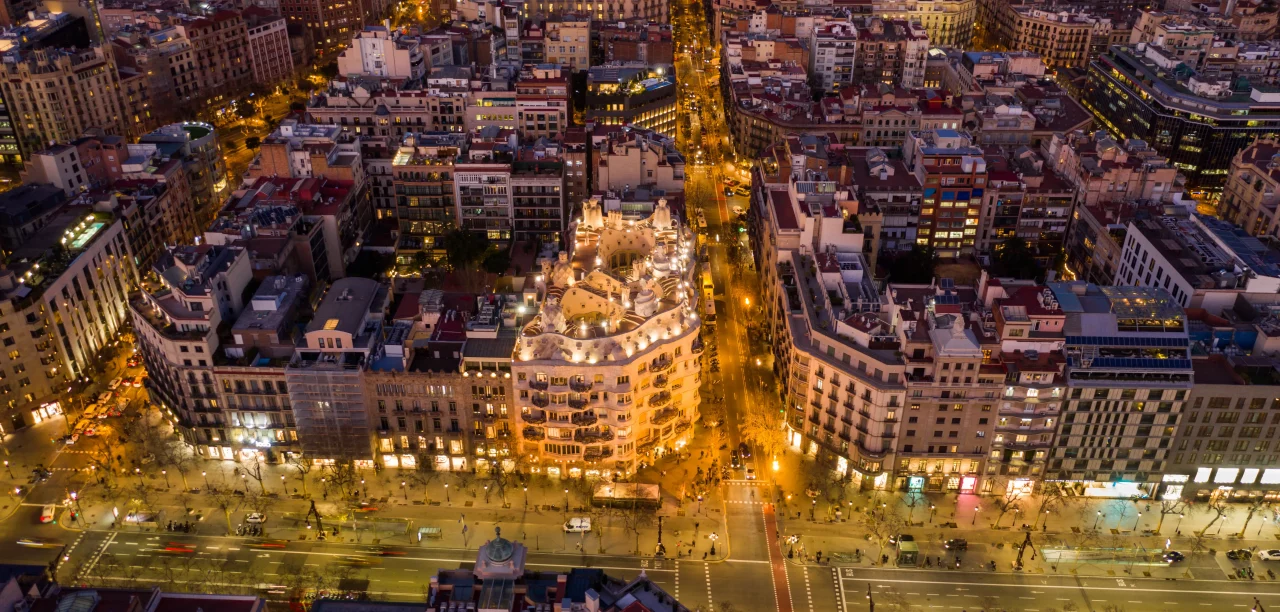
Fun facts about La Pedrera
We continue exploring this Gaudí masterpiece by pointing out some interesting curiosities that you might not have known:
- Inspiration from nature: The facade of La Pedrera is inspired by natural forms such as sea waves and mountains, reflecting Gaudí’s fascination with nature and his desire to integrate it into his designs.
- Use of innovative materials: The construction of La Pedrera was revolutionary for its time. Gaudí employed innovative techniques and materials, such as reinforced concrete, which allowed for the creation of curved and organic shapes difficult to achieve with other traditional materials.
- Original function: Although today it is known primarily as a tourist and cultural attraction, La Pedrera was originally built as a building for residential and commercial use. The upper floors were intended for the residence of the Milà couple, while the rest of the building housed rentals and businesses.
- Gaudí’s sculptures: In addition to the architecture, Gaudí also designed some of the decorative sculptures found on the facade of La Pedrera, such as the figures on the balconies and the wrought iron grilles.
- Home of the Fundació Catalunya-La Pedrera: Since 1986, La Pedrera is managed by the Fundació Catalunya-La Pedrera, an organization dedicated to the conservation of cultural heritage and the promotion of culture and education. The foundation organizes exhibitions, concerts, lectures, and cultural activities in the building.
- A movie set: La Pedrera has served as a setting for several movies and film productions. Its unique architecture and evocative atmosphere make it a popular location for shootings and photo sessions.
- Global recognition: In 1984, La Pedrera was declared a World Heritage Site by UNESCO, along with other works by Gaudí in Barcelona. This international recognition highlights its cultural and historical importance as one of the most outstanding works of Catalan Modernism.
And if you want to discover more unique buildings, check out these historic houses in Barcelona that you will love.
Gaudí, the Genius Behind La Pedrera in Barcelona
Antoni Gaudí was a Catalan architect born on June 25, 1852, in Reus and passed away on June 10, 1926, in Barcelona. He is one of the foremost exponents of Catalan Modernism and an iconic figure in the history of architecture. His unique and innovative style, inspired by nature and religion, distinguishes him as one of the most original and visionary architects of his time.
He studied architecture at the School of Architecture of Barcelona, where he graduated in 1878. From the beginning of his career, he showed an interest in experimentation and the search for new forms and construction techniques. His early works reflect influences from historicism and the Gothic Revival, but over time he developed his own distinct style that set him apart from conventional architectural currents.
One of the most striking features of Gaudí’s work is his connection with nature. Inspired by organic forms and natural processes, Gaudí created buildings that seem to emerge from the landscape itself, using curved shapes, irregular textures, and botanical motifs in his design. This fusion between architecture and nature is spectacularly manifested in other Gaudí works like the Sagrada Familia and Park Güell.
Gaudí also excelled in his use of innovative materials and the integration of decorative elements in his buildings. He utilized a wide range of materials to create impressive visual effects and unique ornamental details, such as wrought iron or ceramic mosaic.
Throughout his career, Gaudí worked on a large number of projects, leaving a unique architectural legacy in Barcelona and throughout Catalonia. Among his most famous works are the Sagrada Familia, Park Güell, Casa Batlló, and, of course, La Pedrera (Casa Milà). Although some of his works were incomplete at the time of his death, his influence endures to this day.
NUESTROS APARTAMENTOS EN BARCELONA
Since 2010, Lugaris Apartaments has been offering you the best holiday rental flats in Barcelona, perfect for a family holiday, with friends or as a couple, or for medium-term stays.
You can choose between apartments near the beach in Barcelona, at Lugaris Beach, with sea views, 2 swimming pools (one for adults and one for children) and capacity for up to 6 people, and the Lugaris Rambla flats, located on the Rambla de Poblenou and just 300 m from Bogatell beach, with a balcony or terrace of up to 22 m2 and ideal for couples or families and groups of up to 5 people. All our luxury flats in Barcelona are air-conditioned and equipped with all the appliances, furniture and bed linen you will need during your stay. They also have satellite TV and free high-speed Wi-Fi connection, as well as a safe and a 24-hour private security service.
What’s more, when you make your booking, you can reserve many other additional services: international press in your flat, parking space, transfer service to and from Barcelona airport, bicycle hire, supermarket shopping, museum, sports and show tickets, babysitting service and much more.
For more information, contact Lugaris Apartments without obligation.

